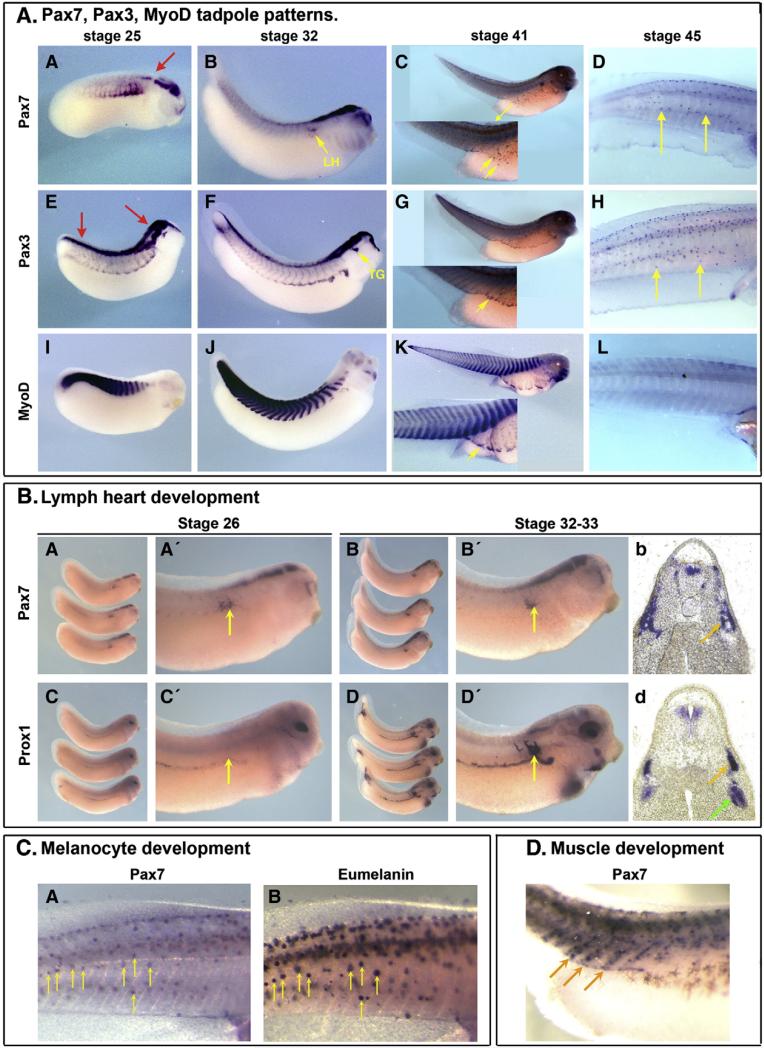Fig. 5.
Pax7 expression in tadpoles. A/ At tailbud stage (st. 25–32) pax7 exhibits a dynamic expression in the myotome, which vanishes at late stage, while brain and spinal cord expression remains restricted to hindbrain and anterior spinal cord (A–B). Pax7 is also found in the lymph heart (B, arrow). This contrasts to pax3 expression in the entire length of the spinal cord, in the hypaxial muscle and trigeminal ganglia (E–F, arrows) or to myod expression in the epaxial muscles (I–J). At swimming tadpole stage (st 41–45), pax7 is expressed in scattered cells on the side of the embryo (yellow arrows) and cells that align at the edge of the myotome cells (see D/), while pax3 and myod mark muscle (G, K). Both pax7 and pax3, but not myod, label melanocytes (D, H, L). B/ During lymph heart development, pax7 is detected earlier than the lymph heart marker prox1 (A, A′, C, C′). By stage 33, both pax7 and prox1 expression overlap in the lymph heart (B, B′, D, D′ and transverse sections b, d, yellow arrows), while prox1 is also expressed adjacent to the cardinal vein (green arrow; Ny et al., 2005). C/ Late tadpoles where photographed before bleaching to position the melanocytes (B) and then pax7 was revealed (A). Most melanocytes were labelled by pax7 (yellow arrows). D/ Some pax7-positive cells aligned at the edge of each myotome in stage 41 tadpoles and may constitute the prospective satellite cell population (arrows).

